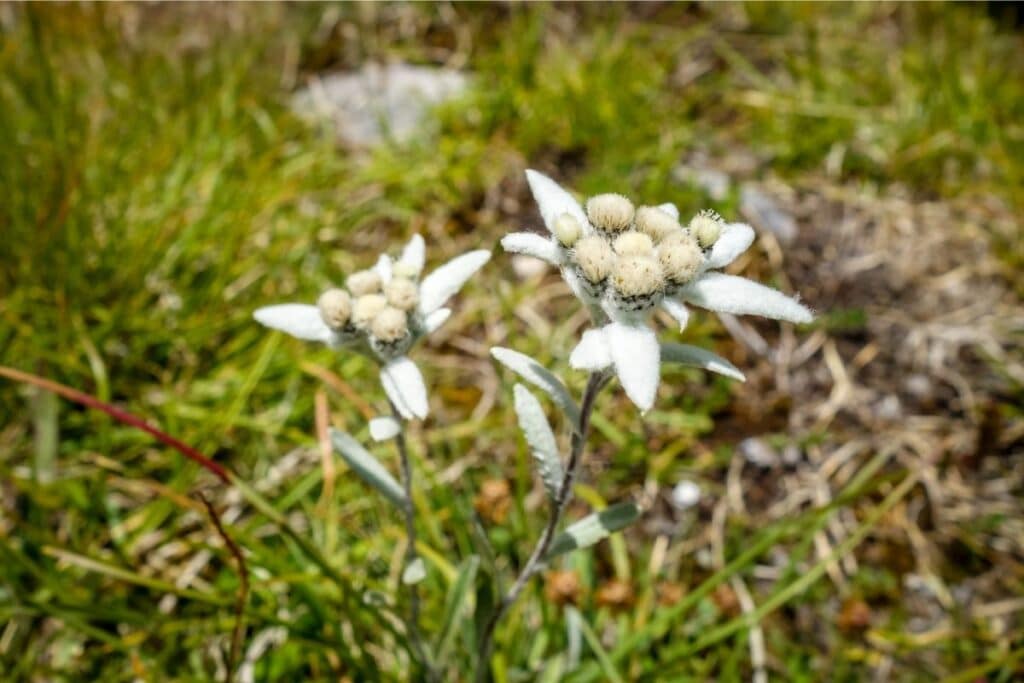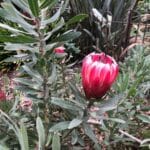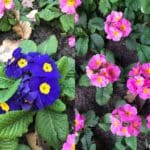Edelweiss is a native flower to the Alpine regions in Europe, North America, and the Asian continent.
Depending on the climate, these flowers will grow easily, and they will catch everyone’s attention mainly due to their unique shape and petals.
This plant is protected in several areas, as it is considered a short-lived perennial. This means fewer edelweiss plants will grow in those particular zones.
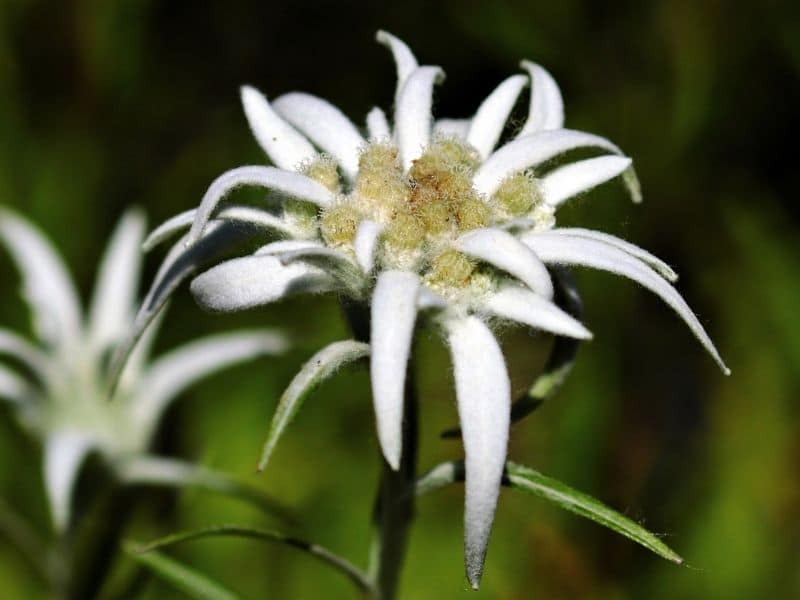
Continue reading if you would like to learn more about Edelweiss flowers.
Basic Facts about Edelweiss Plant
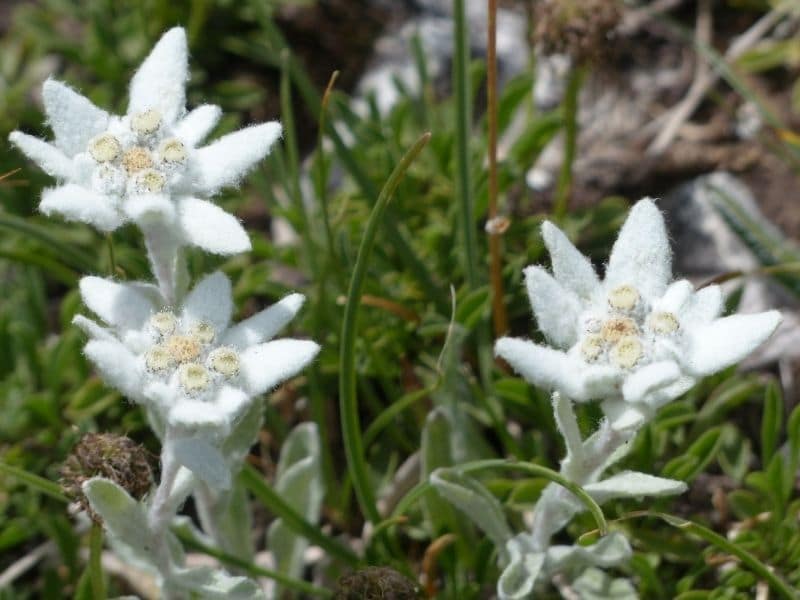
- Edelweiss is a plant that evokes nostalgia because there are fewer of them each year.
- Its woolly leaves can be spotted from miles away, as they tend to be sharp white.
- Also known by its scientific name of Leontopodium alpinum, this plant is related to daisy flowers, as they are part of the Asteraceae family of plants.
- This plant has a fibrous root system. In fact, its roots are fibrous, which means they can ‘travel’ and anchor themselves even in the most difficult of terrains.
- However, precisely because of this root strength, mature plants of edelweiss tend to take their time to grow, and once they reach full maturity, they will not grow more than 12 inches in height.
- The Leontopodium alpinum plant needs cold temperatures and strong winds in order to become healthy. As a result, they will grow best in zones 4 to 7, according to the US Department of Agriculture (USDA).
- Edelweiss flowers have white petals and a yellow center.
- Native to the cold mountains of the Swiss Alps and some other places in Central Asia
How To Grow Edelweiss Flowers

Growing edelweiss flowers is a straightforward process.
Light Conditions
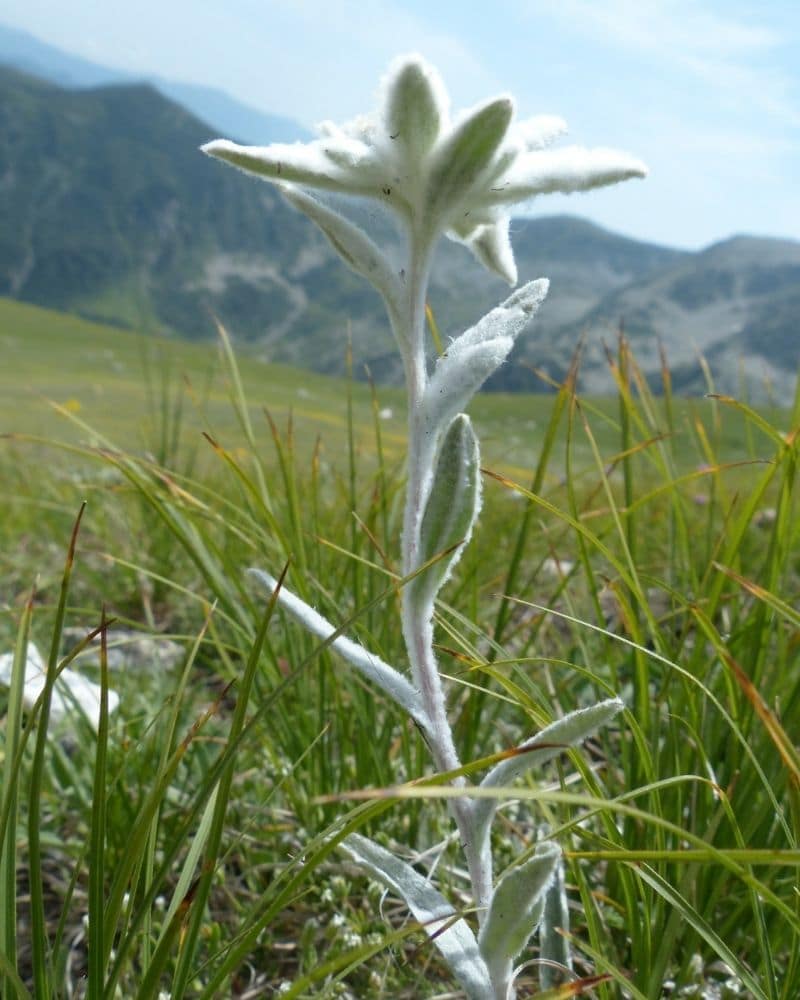
Edelweiss thrives in full sun or dappled shade. To mimic its natural habitat, consider planting it beneath taller plants that provide partial protection from the elements while allowing dappled sunshine.
Edelweiss is hardy in USDA zones 4 to 7, where it endures cold temperatures and high winds. Remember, these delicate blooms prefer a touch of shade to complement their sun-loving disposition.
Water Needs
The Leontopodium plant needs to be watered thoroughly and constantly. However, ensure their pot has well-draining soil and drainage holes to prevent waterlogging. You should put the potted edelweiss somewhere you will walk by often so you don’t forget to water it.
Soil Requirements

A neutral or slightly alkaline soil will be best for this plant. Limestone is usually used to raise the pH level of the soil. Ideally, edelweiss flowers will have well-drained soil, as they do not tolerate soggy soil.
This plant will grow best if you place them near rocks, as the limestone that’s slowly released onto the soil, will help the white edelweiss flowers grow.
Planting Edelweiss
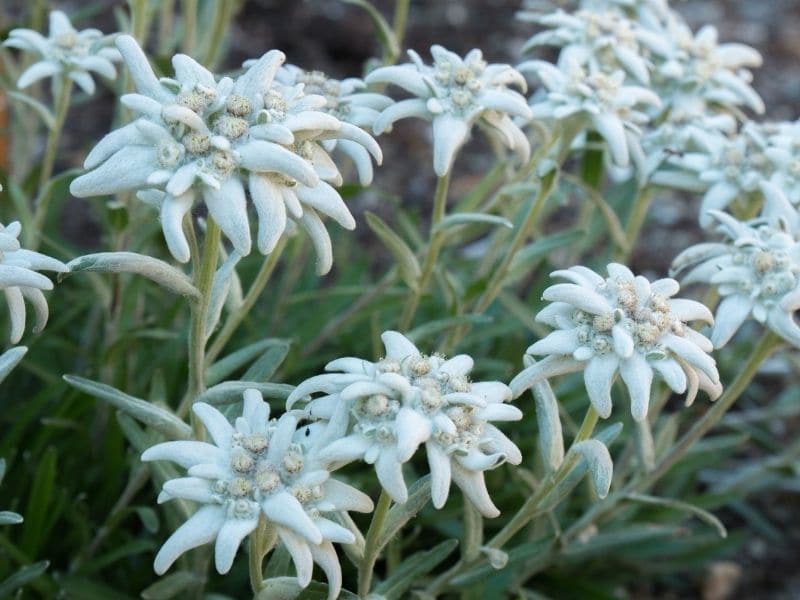
It would be best if seedlings are planted in early spring; although you must be careful if you live in a warm area as they will not tolerate strong, dry summers.
If your edelweiss is already 3 years or more, dig the plants up from its roots and separate them. You can then replant the new flowers, as this will help them grow healthier.
You can start seeds indoors or outdoors. If you are starting outdoors, make sure the last frost has recently passed; otherwise, your edelweiss seeds may suffer from these humid climates.
If you start them indoors, then you can start whenever you wish to do so. Ideally, you would have at least four weeks left of winter. Transplant the edelweiss seedlings to the garden after the frosts have passed, during spring.
How To Care For Edelweiss Flowers
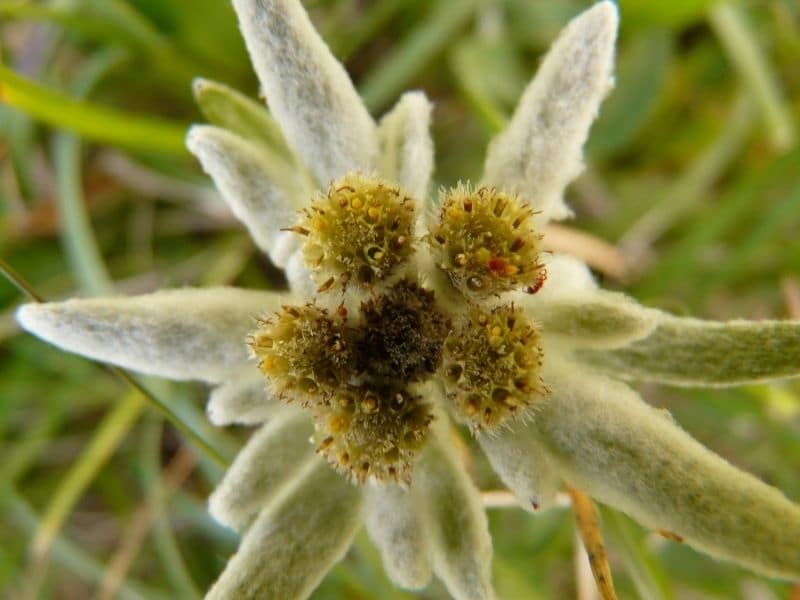
Edelweiss will bloom during their second year, as they will usually take their time to mature and become resistant. Once they have established themselves, they will continue to bloom for a couple of years.
This alpine flower tends to thrive best in snowy climates. If you live in a warmer area, then you should apply mulch to your plants. This way, you could slightly replicate the moisture these plants need.
If the edelweiss plant is happy in its environment, then they may re-sow themselves in the following years. If not, then you will need to re-plant them every two to three years, so you can continuously enjoy their presence!
While edelweiss doesn’t require specific pruning for healthy growth, early spring is the ideal time to remove dead, diseased, or overcrowded stems with sterilized shears. Snip off spent flowers to prevent unwanted seedlings, but avoid removing more than a third of the plant to avoid stress. Remember, proper pruning edelweiss and thorough watering after can keep your plant thriving.
FAQs
These are some common questions about the Leontopodium plant.
Does edelweiss need full sun?
Yes, Edelweiss (Leontopodium alpinum) prefers full sun but can tolerate some shade, especially in hot climates. Plant them in a location where they can receive at least 6 hours of sunlight per day for optimal growth and flowering.
Where does edelweiss grow best?
Edelweiss grows best in cool, mountainous regions with well-draining soil and good air circulation. They are native to alpine regions of Europe, where they thrive in rocky, nutrient-poor soils at high elevations.
Is edelweiss easy to grow?
Yes, edelweiss is relatively easy to grow. It prefers well-draining soil, and once established, it requires minimal plant care. It grows slowly and begins flowering in its second year.
How do you grow edelweiss indoors?
To grow edelweiss indoors, place it in a bright, indirect sunlight location, such as a south-facing window. Maintain a consistent temperature of around 65 to 75°F. Mist the soil regularly to keep it moist but not waterlogged.
Why is edelweiss so rare?
Edelweiss is scarce because it grows in remote mountain areas with specific soil conditions. Its unique habitat, combined with its rugged beauty, has made it a symbol associated with the Alps and Carpathians. It’s also a national symbol in several countries.
Conclusion
With proper care, including well-draining soil, ample sunlight, and moderate watering, you can cultivate beautiful and thriving edelweiss flowers in your garden. Remember, these delicate blooms require specific conditions to flourish, so be mindful of their needs to bring a touch of alpine charm to your rock gardens.
Up next: Edelweiss Flower Meaning and Symbolism
*Image by daboost/depositphotos

